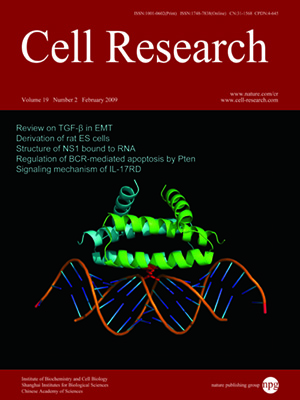
Volume 19, No 2, Feb 2009
ISSN: 1001-0602
EISSN: 1748-7838 2018
impact factor 17.848*
(Clarivate Analytics, 2019)
Volume 19 Issue 2, February 2009: 156-172
REVIEWS
TGF-β-induced epithelial to mesenchymal transition
Jian Xu, Samy Lamouille and Rik Derynck
Department of Cell and Tissue Biology, Programs in Cell Biology and Developmental Biology, University of California-San Francisco, San Francisco, CA USA
Correspondence: Rik Derynck,(rik.derynck@ucsf.edu )
During development and in the context of different morphogenetic events, epithelial cells undergo a process called epithelial to mesenchymal transition or transdifferentiation (EMT). In this process, the cells lose their epithelial characteristics, including their polarity and specialized cell-cell contacts, and acquire a migratory behavior, allowing them to move away from their epithelial cell community and to integrate into surrounding tissue, even at remote locations. EMT illustrates the differentiation plasticity during development and is complemented by another process, called mesenchymal to epithelial transition (MET). While being an integral process during development, EMT is also recapitulated under pathological conditions, prominently in fibrosis and in invasion and metastasis of carcinomas. Accordingly, EMT is considered as an important step in tumor progression. TGF-β signaling has been shown to play an important role in EMT. In fact, adding TGF-β to epithelial cells in culture is a convenient way to induce EMT in various epithelial cells. Although much less characterized, epithelial plasticity can also be regulated by TGF-β-related bone morphogenetic proteins (BMPs), and BMPs have been shown to induce EMT or MET depending on the developmental context. In this review, we will discuss the induction of EMT in response to TGF-β, and focus on the underlying signaling and transcription mechanisms.
Cell Research (2009) 19:156-172. doi: 10.1038/cr.2009.5; published online 20 January 2009
FULL TEXT | PDF
Browse 2092


